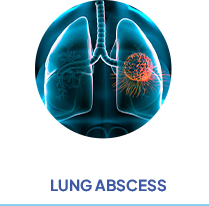
Myasthenia Gravis
And Thymectomy
Myasthenia Gravis And Thymectomy
Myasthenia Gravis (MG) comes from the Greek and Latin words meaning “grave muscular weakness.”
The most common form of MG is a chronic autoimmune neuromuscular disorder that is characterized by fluctuating weakness of the voluntary muscle groups. The prevalence of MG in the United States is estimated to be about 20/100,000 population. However, MG is probably under diagnosed and the prevalence may be higher.
MG is not directly inherited nor is it contagious. It does occasionally occur in more than one member of the same family.

PROGNOSIS
- The current treatments for MG are sufficiently effective that the outlook for most patients is bright.
- There is much that can be done, but still much to understand.
- New drugs to improve treatments are needed.
TYPES OF THYMECTOMY
There are 3 common methods:
Trans-Sternal Approach
An incision will be made in the skin over the breastbone/sternum. The thymus gland will then be exposed and removed. The incision will be closed with stitches or staples. Usually done for large tumors and locally advanced tumors.
Transcervical Approach
A small incision is made across the lower part of the neck, just above the breastbone. The thymus gland will be removed. The incision will be closed with stitches or staples.Cosmetically better and less morbid than trans-sternal approach.
Video-Assisted Thoracic Surgery (VATS)
Thymectomy is done via 3-4 small holes made into the chest. It offers all the benefits of minimally invasive surgery. It has become the mainstay of treatment for thymic surgery in most of the cases, exception being locally advanced tumors.
Robot-Assisted Thoracic Surgery (RATS)
This is a less invasive option. Several tiny incisions are made in the area. A tiny camera is inserted through one of the incisions. The camera will send images to a monitor in the room. Robotic arms may be used to do the surgery. Special tools will be passed through the remaining incisions to remove the thymus. After the thymus is removed, the incisions will be closed with stitches.
Benefits of Robotic Thymectomy Over Open Surgery
Robotic thymectomy is much less invasive. Because there is no long incision and the chest does not have to be opened, patients experience:
- A shorter hospital stay – usually going home the day after surgery
- Less pain – typically requiring only mild pain medications
- A quick recovery – taking about two weeks to get back to work
Benefits of Robotic Over VATS Thymectomy
- The much improved surgical instruments
- Significantly better visibility of vital structures, such as pulmonary arteries
- The ability to perform precise movements and dissection more easily All of these advantages give the surgeon better control – which further reduces the risk of complications for patients.
Thoracic robotic surgery, is a recent advancement – one that requires both skill and experience to be done right with great results.
Patient Speaks





Blog

What Type of Surgery is Robotic Surgery?
Have you ever had to decide between robotic and manual surgery? Are you concerned about which choice appears to be

What Type of Surgery is Robotic Surgery?
Have you ever had to decide between robotic and manual surgery? Are you concerned about which choice appears to be

How Long Does Empyema Surgery Take?
Empyema is a fluid or pus infection that spreads across the pleural space of the lungs. Pneumonia is the most

Is there Surgery for Myasthenia Gravis?
Myasthenia Gravis (MG) is a medical term derived from the Greek and Latin, which means ‘grave muscular weakness. The prominent









